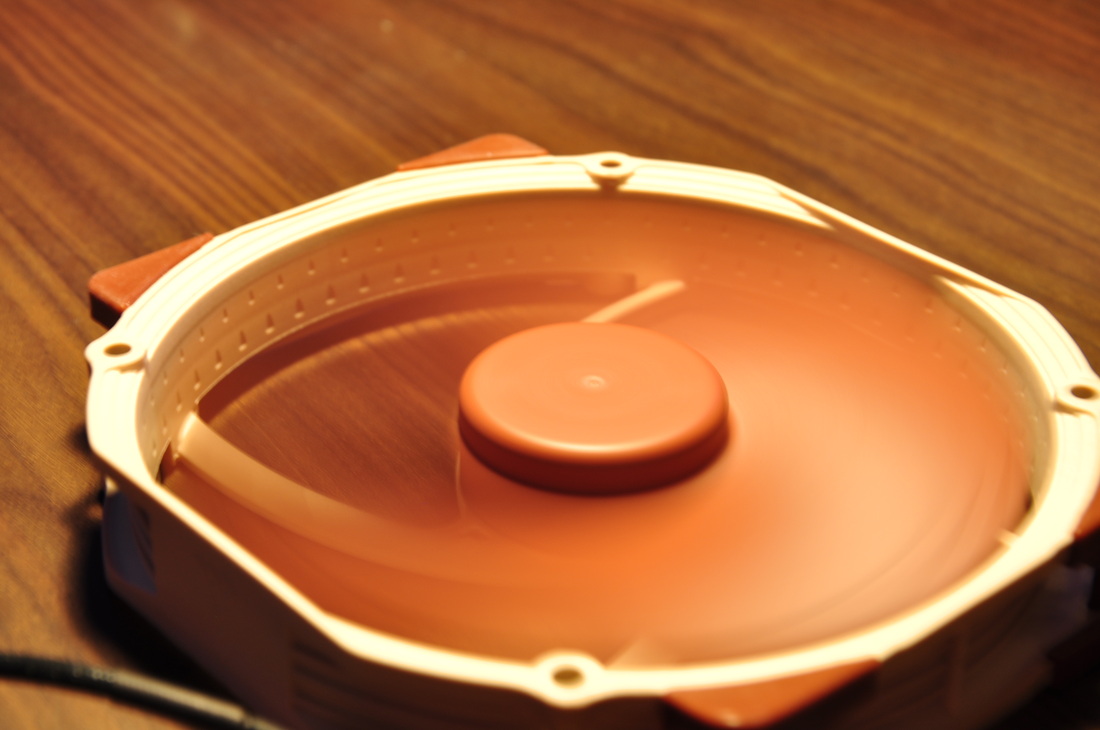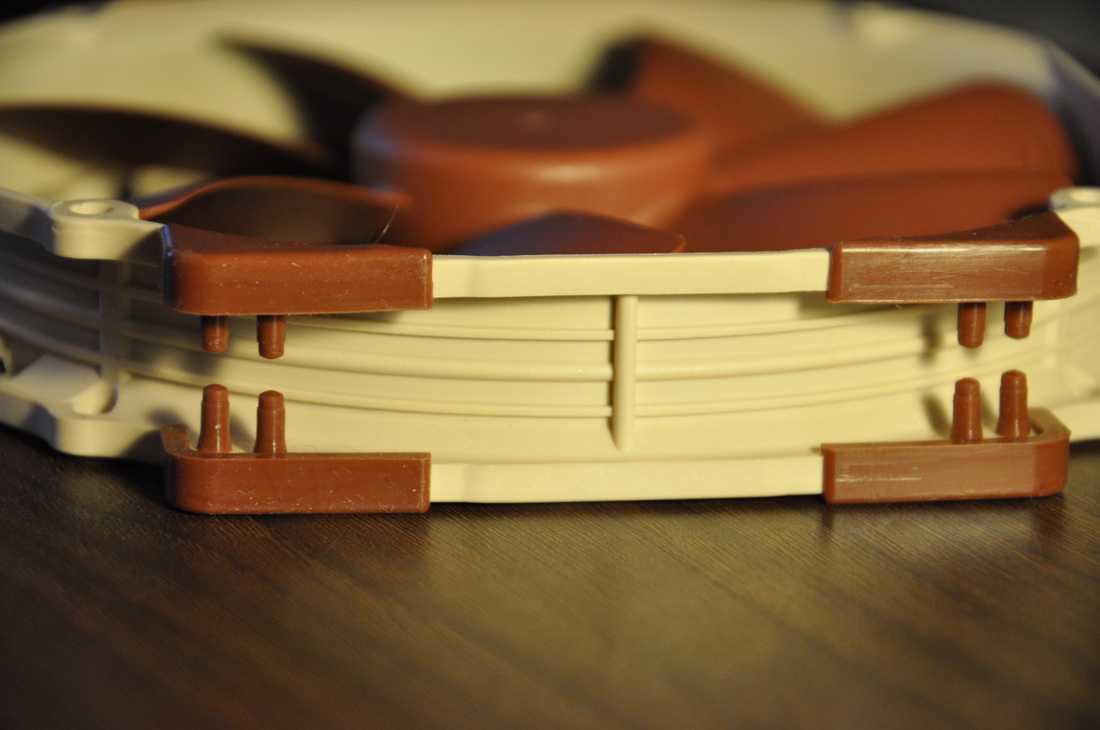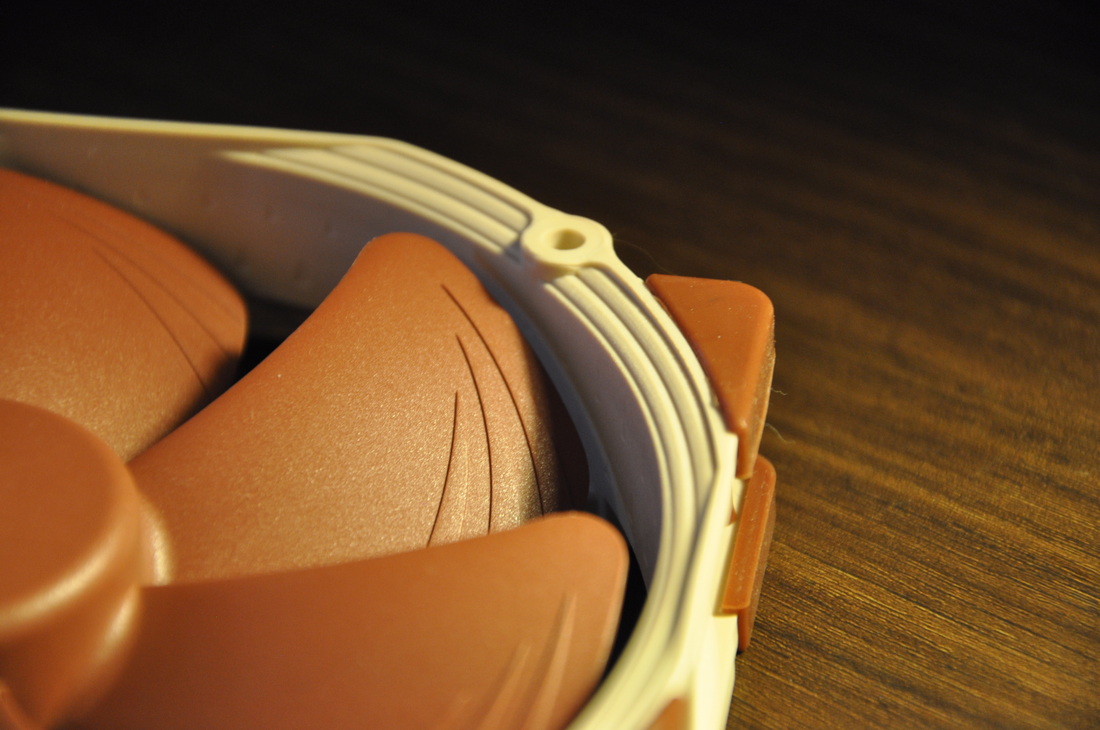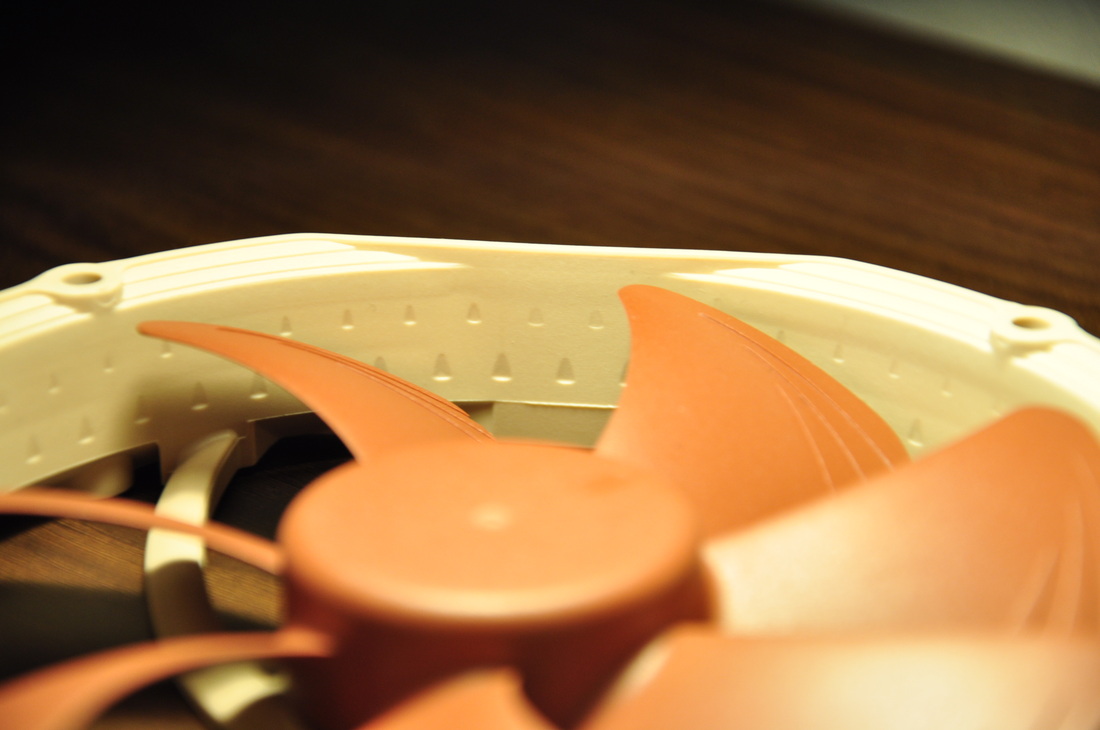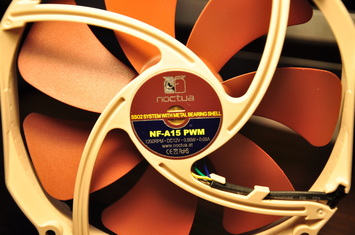Maybe a funny looking fan but you might notice some similarities to a fan I reviewed very recently that rated quite highly receiving our silver award. Can this fan meet the same grade?
Here's the spec:(without L.N.A, with L.N.A)
Max rpm 12000, 900
Airflow(m3/h) 115.5, 88.7
Noise(dB(A)) 19.2, 13.8
Static Pressure (mmH2O) 1.51, 0.89
Accessories: 30cm Extension cable, Low Noise adaptor, Y-Splitter cable, Anti-vibration mounts, Standard screws.
Max rpm 12000, 900
Airflow(m3/h) 115.5, 88.7
Noise(dB(A)) 19.2, 13.8
Static Pressure (mmH2O) 1.51, 0.89
Accessories: 30cm Extension cable, Low Noise adaptor, Y-Splitter cable, Anti-vibration mounts, Standard screws.
Design:
As many features of the NF-A15 are similar or the same to that of the A14, most of the review will almost be a re-iteration of the NF-A14 Review. To start off the review we have the AAO (Advanced Acoustic Operation) frame, this is essentially a list of features integrated into the chassis of the fan and is comprised of 3 different things.
| The first Part is the Anti Vibration pads, first seen on the NF-F12, I did and still do to this day feel that this for some reason is my favourite feature out of every fan I have worked with first seen on the NF-F12, I did and still do to this day feel that this for some reason is my favourite feature out of every fan I have worked with. They both look and perform amazingly. The second part is the Stepped Inlet Design, This design is said to help direct the air into the fan in a more efficient manner.I can't say that these definitely are what makes this fan so quiet but what I CAN say is that they look good and along with the rest of the AAO frame, give the fan a nice premium look and feel to it. And now for the final feature, here we have the Inner Surface Microstructures. The idea behind these is similar to the golf ball. Essentially this is designed to create a kind of air buffer between the fan blades and chassis lowering noise from the blades. I believe that we will see these features integrated a lot more in the future which I am happy about. |
Moving on from that we have a NEW feature with this new range. It is called the flow acceleration channels and basically what they are is another feature that helps direct the airflow in a manner that reduces the noise produced while even speeding the air up through the fan. Now the shape of the blades is very curved, something I have never really liked in a fan, I am more into fans with sharp powerful looking blades. These channels however add that little extra touch that give it a bit of that feel to it.
A feature I should have probably started with was the overall shape of this fan. This fan is the successor to the NF-P14 FLX. While on the box it says it is a 150mm fan, it only measures 150mm along the widest part of it, the fan itself is a 140mm standard, exactly the same fan essentially as the A14 but in this case with 120mm fan mounting holes.
| Breaking the fan down we find the incredibly successful SSO2 bearing system enclosed in a copper bearing shell. I can almost guarantee you will not find a better performing, long lasting, quiet bearing system than this. If there is any companies reading this, I challenge you to change my mind on this because as far as I'm concerned it's unbeatable at this point in time. |
To conclude the design section, the NF-A15 PWM fan is the un-identical twin to the NF-A14. They share many features and the main things you will notice on this fan are: the pwm functionality, the 14mm fan with 120mm mounting holes and the fact it has an extra wide section in which the anti-vibration mounts are place. These features turn the NF-A14 into a fan completely optimised for cpu heatsinks. While this makes it a perfect choice of 140mm fan if you need it for a heatsink, its less than useless in my opinion at anything else, the shape is basically a nice optimisation but a limitation at the same time.
Performance:
Just as the NF-A14 variants both performed outstandingly, this fan with the PWM function pushes a ton of air at a quiet noise level. As the fan is designed in a manner to be used on heatsinks, static pressure and airflow are nothing to worry about so unless you are benchmarking I would recommend using the low noise adaptor as the max performance will be overkill in most scenarios and there is only benefits in making your system quieter.
Conclusion:
While the fan performs exceptionally like we come to expect with Noctua's products and has an outstanding array of features, I am just not feeling the look. Even though the shape of the fan makes it perfect for heatsinks, with the anti-vibration positioning and the 140mm fan diameter while only using 120mm mounting hole, I find it quite awkward to look at from just about every angle. Performance however still counts and so the overall rating was not that dissimilar to the NF-A14 fans at 8 compared to 9. Value also was similar but lower in this case again do to the fact that the fan is so optimised for heatsinks it becomes almost completely limited to them so you can't re-use it for a different purpose. The fan receives a very respectable 7 for value giving this fan a total of 15 making it worth of the HalTechTV BRONZE AWARD, just shy of the Silver that the NF-A14 received.
Verdict:
Rating: 8/10
Value: 7/10
Value: 7/10
